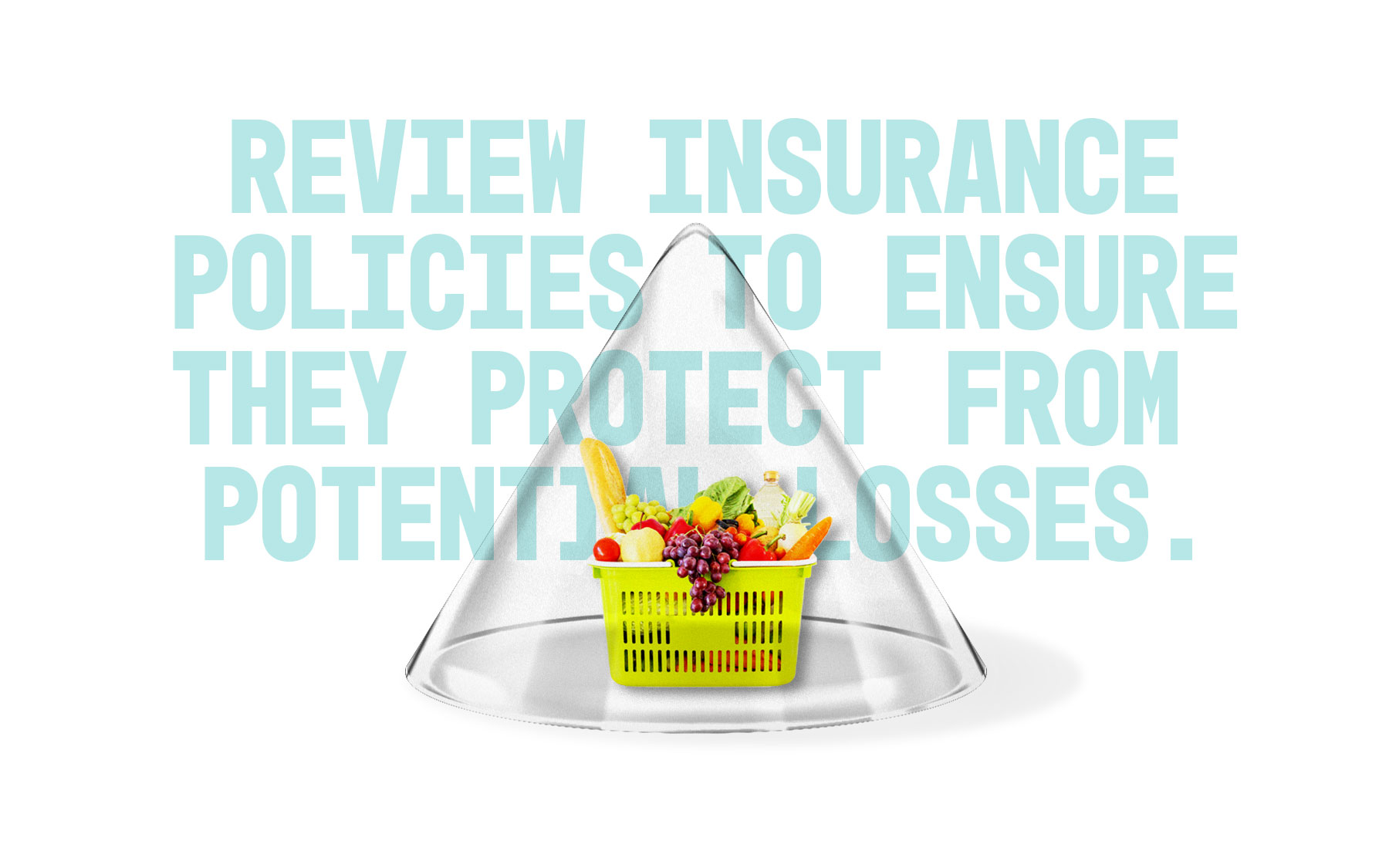For so many businesses, brand protection is inextricably linked to crisis management. Frequently, though, the planning and exercises necessary for effective crisis management are done reactively, rather than proactively; and all too often, those critical preparations are incomplete, out of date or altogether neglected. This can be a real gamble; because brand protection is the driving force behind risk management and crisis planning, organizations risk making costly mistakes when managing recalls and other product safety incidents in the midst of a crisis.
Businesses are arguably operating in the most turbulent and uncertain time in recent history. The global pandemic created challenges that no one could have predicted. Some have survived by adapting operations, some completely transformed their business, still others were forced to shutter. The impact of COVID-19, however, is only part of the story.
Consider all the market and regulatory forces at play: Companies face ever-higher expectations and demands from consumers — and those consumers are motivated and more than willing to use social media as a forceful and effective method of mass communication. A paradigm shift is occurring in the U.S. under the new Democratic administration and legislature committed to strengthening regulations in many cases or enhancing them to better protect consumers and the environment. And while the judicial process has slowed in response to COVID-19, the plaintiffs’ bar remains more active than ever in its pursuit of new class-action lawsuits in an increasingly litigious society.
Reputational damage and financial costs are more likely to exceed expectations when there’s inadequate planning, or when businesses underestimate the impact a product safety or quality event like a recall can have. Start at a philosophical level before drilling down to details, and ask yourself the following fundamental questions to determine your organization’s level of preparation for a product safety crisis.

Do you have a recall plan or a product safety crisis plan?
Product recalls are sometimes viewed as cut-and-dry exercises in communication and logistics — at least, that’s how many recall plans make it look. But one misstep could turn even a minor recall into a major crisis, if recall plans fail to consider factors beyond regulatory obligations and tactical execution.
By thinking about recall planning differently, you can evolve the traditional recall plan into a product safety crisis plan. To start, shift your priorities to align with your ultimate objective: brand protection.
A brand’s product safety or quality may be called into question the moment a customer complains (which happens long before and far more frequently than a recall), or learns about an adverse event. Reputational risk can begin when a regulator conducts an inspection. It continues when potential quality or safety issues are identified and investigated. The truth is, reputational threats remain even when a decision is made not to recall the product — there’s still a chance for bad publicity, a drop in customer satisfaction and loyalty, or even legal action.
How a business chooses to respond upon learning about a potential safety or quality issue is every bit as important as how a recall is managed. Perceived inaction in response to product safety-related allegations and adverse event reports are often more damaging than a low recall response rate.
As you review your organization’s plan, consider whether it addresses more than just the recall process, taking into account:
- The evolving regulatory landscape and latest recall best practices
- Tools to demonstrate a commitment to quality products and customer service (e.g., product updates, upgrades, field teams, warranty work, etc.)
- Product safety and recall track records and how the latest events will be viewed by regulators, customers and consumers
- The risk profile for each product or service offered
- The impact competitors’ recalls have directly and on the entire industry
- Current and new liability risks, including regulatory enforcement and potential legal actions
- How you’ll engage partners, customers and industry organizations during a recall
- How you’ll handle a single inquiry, complaint or adverse event report
- How best to handle negative press and upset or angry customers
 Do your crisis and recall planning efforts align with your current (and future) business strategy and objectives?
Do your crisis and recall planning efforts align with your current (and future) business strategy and objectives?
In today’s fast-moving, hyper-competitive market, nimble and innovative businesses edge out the competition. Never was this more apparent than in the early months of the COVID-19 pandemic.
Organizations of all sizes were challenged to find new ways to do business in order to survive. In some cases, traditional business-to-business organizations, including those in the food service space, explored ways to shift to a direct-to-consumer model. In other industries, manufacturers halted production of normal product offerings to make personal protective equipment (PPE) used in the global COVID-19 response. While these organizations very likely benefited from first-mover advantages, positive publicity or increased revenue, it is likely these decisions were made without full appreciation for what the new obligations would be in the event of a recall.
Now is the time to catch up.
Consider how business has changed since you last updated your recall or crisis plans. Ensure planning documents provide the guidance needed to navigate the current regulatory environment, evolving legal risks and business operations (including go-to-market strategy) for the full suite of product offerings (past, current and future). Any change made over the last 12 months could present new risk and exposure.
But this process should not be viewed solely as a post-pandemic task. It would be wise to regularly evaluate potential risks and exposure, including conducting periodic product sampling or quality testing, examining advertising materials and claims, evaluating risk profiles, and analyzing the legal and regulatory landscape. Be sure to review your insurance policies and coverage to fully understand when and how a product recall, contamination or liability policy is triggered for every product offered. Review insurance policies to ensure they protect from potential losses.
What is your relationship with your supply chain, customers and consumers?
It shouldn’t be a surprise that business partners are typically very responsive to recall actions; retailers and grocers, for example, often act with more urgency than the manufacturer or producer responsible for the product. That’s at least in part because business interruption, liability risks and loss of sales are not risks unique to the recalling firm. They impact organizations up and down the supply chain.
During a recall, firms that understand and appreciate this shared risk are often best positioned to maintain positive relationships with consignees, retailers and consumers. The companies that effectively communicate, act quickly and make the recall as turnkey as possible for partners are the ones with the most success retaining those relationships.
When coordinating recall plans, consider these questions upon evaluating existing relationships with the supply chain, customers and consumers:
- Do my partners upstream understand my product safety expectations of them?
- Do my partners downstream know my plans for managing a recall if needed?
- What do my partners downstream expect from me in the event of a product safety issue? How can I make a recall as easy as possible for them?
- How will I reach consumers if needed? What are the best channels?
- What actions are we willing to take to make the situation right for our customers and consumers?
- When is the last time I had these conversations with key stakeholders?
By engaging customers, supply chain partners, industry groups, regulators and recall experts ahead of a potential recall, you will have a plan in place that goes beyond navigating the recall process. This plan will help you uphold your commitments to the stakeholders that matter most.
 How prepared are you for the unexpected?
How prepared are you for the unexpected?
The best crisis and recall plans reflect guidance and input from internal and external stakeholders, including product recall experts, legal counsel, crisis communicators and product recall insurance providers. One effective way to validate your recall plan is through a “mock recall” drill.
A well-facilitated recall drill puts your plan to the test. It helps evaluate whether the team is prepared and has the resources necessary to execute critical components of a recall including notifications, retrievals and reverse logistics, data management and regulatory reporting, and product storage and disposal. With a well-crafted scenario and expert facilitator, these exercises shed light on gaps and opportunities for improvement not just in a recall response, but also in the daily approach to in-market remediation activities. Ideally, you’ll examine questions including:
- What are the latest best practices?
- Do your team members understand their roles and responsibilities?
- Do you have standing agreements with partners who can provide additional resources you need?
- Are there new regulations we need to consider?
- What has worked for companies facing similar product safety risks?
- What can we learn from missteps other companies took during a recall?
- Is your insurance adequate?
Some companies choose to run these drills in-house; in our experience, this can result in a routine exercise that “checks the box,” rather than facilitating a thought-provoking examination and validation of your recall preparedness.
Effective preparation involves turning best practices into strategies, plans, processes and systems. It helps to ensure your remediation capabilities are adequate and aligned (in-house and with partners) to efficiently and effectively deliver results. This way, you can be confident that your plan will work smoothly when a recall occurs.
Take the time to plan and prepare
As the regulatory landscape becomes more strict and complex, supply chains grow longer and consumer expectations expand, businesses need to better prepare for and manage their risks. That starts with a focus on the basics: ensuring regulatory compliance, mitigating legal liability and responsibly managing your supply chain.
A key part of that preparation is taking the time to plan and to prepare your team for a crisis. Effective recall planning requires foresight, dedication and hard work, and always benefits from an outside-expert perspective to turn product recall best practices into actionable strategies, plans, processes and systems. To do that, you must ensure your product recall plan is more than just a check-the-box approach to regulatory compliance — it should be a guide to protecting your brand from a product safety crisis.
